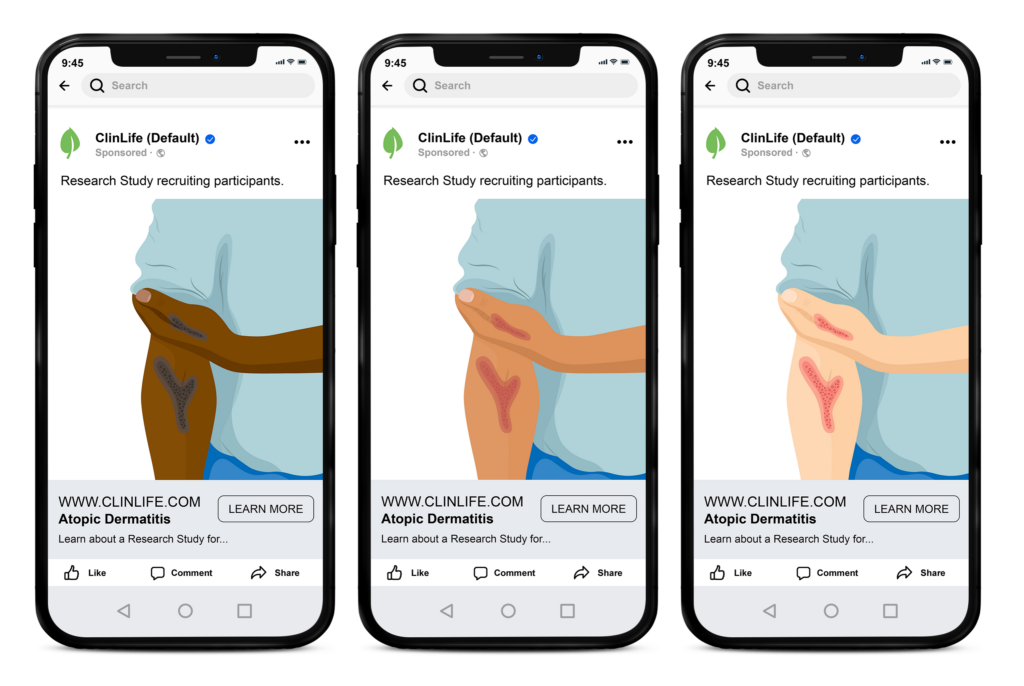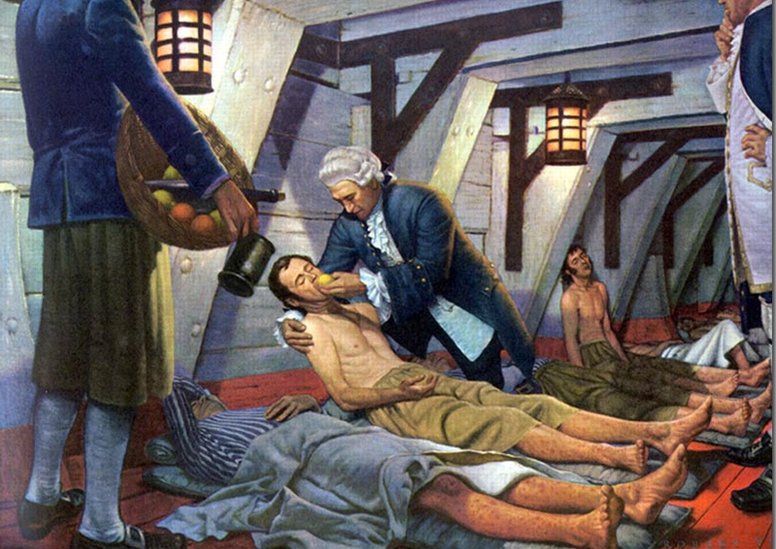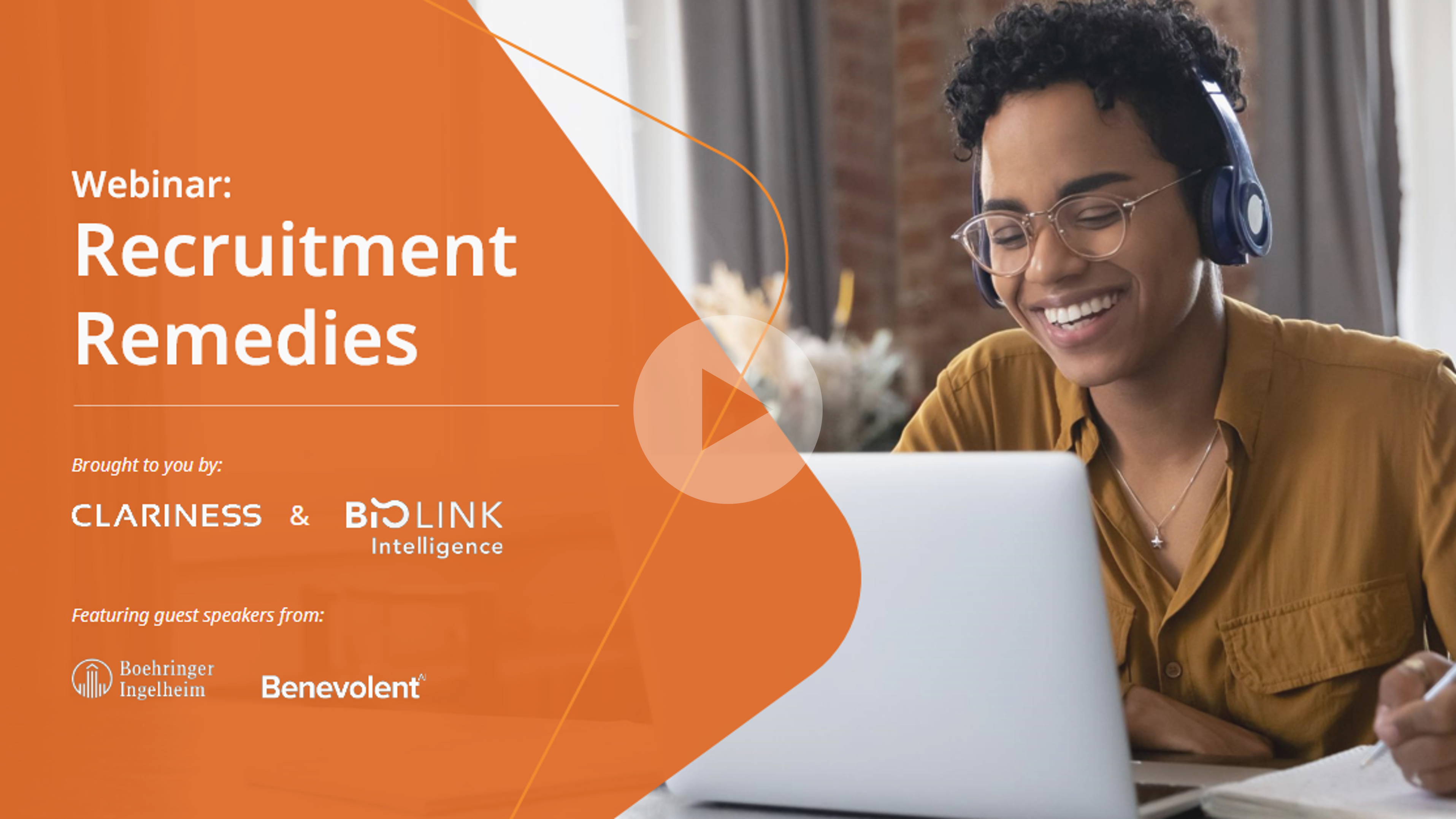The right way to use social media for clinical trial recruitment
By Agata Jasinska, Clariness’ Senior Online Marketing Manager
Social media has been a channel of focus for many patient recruitment companies as the global number of social media users continues to rise. In the last 12 months alone, the number of social media users grew by 10%, to 4.55 billion users, equating to around 1 million new users every day.
While social media’s networks have grown, its use in patient recruitment has come under fire recently with Meta, or Facebook, recently announcing the removal of certain ad targeting options, which includes health causes. However, if like Clariness, patient recruitment companies leverage social media in the right way, it can be a powerful tool which not only enrolls a high number of eligible patients, but provides patients with an opportunity to find new treatments and improve their lives.
In this blog, Agata Jasinska, our Senior Online Marketing Manager within Clariness’ Patient Marketing team, shares some of her team’s core focuses to ensure Clariness and others use social media in the right way for patient recruitment, to drive positive engagements and refer high quality patients.
Her team’s focuses include:
- Developing a deep patient population understanding
- Using inclusive language and imagery
- Leveraging and testing multiple channels
- Optimizing campaign performance through data
1. Developing a deep patient population understanding
The secret to using social media the right way for clinical trial recruitment is having both a medical, and an empathetic understanding of the patient population. At Clariness, our Medical and Patient Marketing teams go to great lengths to understand what the ideal candidate looks like, and how their condition impacts their lives.
This understanding allows you to build materials and targeting that truly resonate with patients. The impact of this is evidenced by the positive patient engagement we see directly on our ClinLife® advertisements. Below is a recent set of positive comments, showing the gratitude of patients for the information provided via social media outreach campaigns:



Developing such an understanding goes beyond the typical review of inclusion and exclusion criteria found within our clients’ protocols. The teams also builds a wider picture of patients, covering:
- The interests they may have
- The products they may use
- How they typically travel
- Their willingness to try new treatments
- The impact their condition can have on their ability to participate in clinical trials
All of this work contributes to building highly targeted campaigns and educational materials that positively encourage patients to participate. Further, it influences key decisions in the campaign building process, such as the channels Clariness uses, targeting criteria, advertising tactics, and the radius from sites in which we concentrate.
2. Use inclusive language and imagery
Clinical trials often underrepresent large groups of peoples from different backgrounds. In the U.S. for example, people of Hispanic or Latino origins make up 18.1% of the population, but typically only represent 1% of clinical trial participants. Underrepresentation can be influenced by race, ethnicity, gender, sexual orientation and more, including age. In Europe, people aged 55 and over make up 33.6% of the population, but are often less than 10% of non-ageing specific clinical trial populations.
There are many reasons for underrepresentation on a global scale, however the two listed below are what Agata and the Clariness Patient Marketing team believes to be the two which have the greatest impact on patient diversity and social media recruitment success:
- Language barriers – Trial advertisements and materials can often exclude non-native speakers if not translated into multiple languages
- Representative imagery – Imagery can often be excluding, whether that’s showing more diverse patients or not accurately reflecting a condition’s impact
We use multilingual and inclusive imagery to build clinical trial awareness which have helped us reach much larger, and more diverse audiences.
Representation through imagery
Certain conditions manifest differently in different ethnic groups, and visuals should reflect this if the campaign is meant to attract people of different origins and heritages.
The manifestation of atopic dermatitis for example is visually different when impacting different skin colors. Atopic dermatitis causes redness, or erythema, which is immediately visible on white skin, but can may be more difficult to detect on darker skin. That’s why in our outreach we advertise atopic dermatitis trials using different imagery, demonstrated below.

Figure 4: Atopic dermatitis appears different depending upon the skin tones
Clariness is not only using a diverse picture pool, but also tailoring the image for each group within our campaign materials, making them more relevant when reaching out to the entire patient population of the clinical trial. It’s important to create advertising and study materials that accurately reflect the study population to generate more diverse patient referrals. If a patient can relate to the condition, imagery and language of the advert, they’re more likely to engage with it and ultimately, enroll.
Patient-centric language
A critical component of good communication is having a common language, or at the very least a shared understanding of the meaning of the conversation’s essential terms. The language employed in advertisements is extremely significant in digital patient recruitment.
As mentioned earlier in the blog, patient-centricity and understanding is essential in engaging and enrolling more patients. Language barriers are not only caused by a lack of translation, but also a lack of patient-centricity. At Clariness, we survey and engage with patients and patient organizations to understand how patients with a particular indication refer to their condition, symptoms and more. In addition, we leverage web and social listening tools for specific indications to be able to better identify and assess how indications, symptoms and treatments are being discussed between patients. We then use this insight in our social media outreach and advertisements to encourage better engagement. We notice that for diseases as Sjögren’s Syndrome, digital outreach and easily-understandable ClinLife® patient landing pages can also be very effective.
Further, we avoid using terms that might bring the patient extra pain or suffering. Some words can bring on symptoms depending on the indication, and knowing this allows us to use words that will not bring forward negative feelings, but offer feelings of comfort. Positive engagement is what creates a better user experience while a patient continues through the journey to enroll for a clinical trial. Further, we have a dedicated Social Media Monitoring Team which monitors and responds to patient comments, providing the patient with further information and education, and reports back on these comments to support the development of patient-centric language and materials.
Country-specific differences in indication terminology
Advertising in various countries requires excellent translations of both medical and layman’s words. Requiring quality checks with native speakers, individuals who reside in the nation, as well as testing with contacts and patients with the condition.
For example, the word atopic dermatitis may be more widespread in the U.S., whereas the term eczema may be more frequent in the U.K. These regional or geographical variances are critical when tailoring social media advertising to the terminology used by the target population.
Clariness is a specialist in understanding the medical terms used in various countries which allows us to better engage both patients and caregivers. Our skilled medical staff and native enrollment management center are charged with:
- Quality assurance
- Accurate translations
- Appropriate localization
3. Leveraging and testing multiple channels
There’s no one right channel for social media patient recruitment
Social media in patient recruitment is not a one size fits all approach, the performance of different social media channels will vary based on the target patient population and continuously changing trends towards each channel. It’s also worth noting that user data, and engagement data can often be two separate things. Facebook for example has a slightly larger male user population (56.6% as of January 2022), yet we find that women are more frequently engaging with our social media campaigns.
The age population of users is also important to consider when choosing the right social media channel for your engagement. Facebook while it has a growing number of senior users, still has a majority of users aged between 25 and 34. However, with over 2.3 billion users, the older demographic of users aged 55 and over, comprising of only 6%, still equates to over 120,000,000 users.
It’s important to note that social media should not be used in silo; a multichannel approach is crucial in influencing patient registrations, even channels that don’t produce direct conversions still positively influence patients into being more receptive of our advertisements. Aligning our advertisements with patients’ favorite blogs, sources of news and weather information, and more, positively align Clariness’ messaging and brand which improves conversions via other channels.
Experiment, record and optimize
Clariness is continuously testing, and optimizing, not only its advertisements but its channels, measuring every step of the digital journey to provide a cost per randomized by channel, patient demographic, country and more. This data is what powers our highly successful social media campaigns, as we A/B test copy, imagery, and channels, to find the best Return On Investment for our clients, while providing high quantities of quality patient referrals.
Clariness not only advertises on the more common social media channels such as Instagram, Facebook, and Twitter, but on newer and growing channels, including TikTok and Spotify. Some may argue that Spotify isn’t a social media channel, but with integrations into Facebook and Twitter, Spotify users are connecting with friends and sharing content, and thus is a way for Clariness to connect with potential patients too.
Clariness recommends the use of multiple channels, aligned to the target patient population of a clinical trial’s protocol, and record all engagement, costs and performance. Doing so, will allow the reinvestment and optimization of the highest performing channels very quickly, which minimizes cost and allows access to much larger, more diverse patient pools.
4. Optimize campaign performance with data
At Clariness, we’ve been digitally campaigning and recording performance data for over 17 years, across 100 indications, and 1,200 studies. This data gives us a head start when designing a clinical trial recruitment campaign which targets comparable patient populations and geographies. Monitoring and evaluating the ongoing effectiveness of all advertising campaigns and channels helps us respond quickly and effectively to obstacles, changing user behaviors and more.
If a social media recruitment campaign is to be successful, it must be built on both primary and secondary data of the channels being used, the user behaviors of the patient demographics, and of the regulatory and privacy laws and codes in place, across all channels and geographies.
Clariness uses state-of-the-art tracking technologies which help us better communicate and leverage the different, and ever evolving, algorithms of each social media channel. These tools ensure we get the best possible exposure and conversion rates, while complying with all and any data privacy regulations.
The result of data-driven campaigns
Over time, we digitally record the performance of each advertisement, the copy and images used, the channels employed, the cost of such channels and their subsequent screener and study registration numbers.
Our Enrollment Management Center, which pre-screens and qualifies referrals before sending onward to trial sites, also identifies with the patient which offline and online channels influenced their registration journey. Combining this data, with insight directly from the patient, allows us to know which channels perform best, whether as a standalone channel or paired with others, including both online and offline advertisements.
The performance of every campaign differs depending on the target population, but the use of this data allows for the optimization of campaigns that hugely increase in performance over a short period.
Below is an example from a previous recruitment campaign, which shows a large increase in both screener completions and study registrations. The period of optimization, varies between campaigns based upon the target population, budget and other variables, but what the below graph demonstrates, is the power of leveraging data and feedback to optimize campaigns and boost exposure and registrations.

Conclusion
Clariness uses data, experience and medical knowledge to drive patient-centric campaigns and journeys across all channels, online and offline, including social media. The right way to use social media is to focus on being empathetic, compliant and using it as one of many channels, knowing its impact on other channels and monitoring performance over time.
To ensure high performing social media patient recruitment campaigns, trial managers and sites should work with providers that have historic performance data across multiple social media channels, and who use this data to drive performance.
Want to know how we can support your patient recruitment?
Whether you’re planning, or actively recruiting, we can support your trials to ensure you meet your enrollment targets. Simply get in touch with one of our experts, and we will review your study’s requirements, and develop a strategy to enroll more patients.
Insights and recourses



